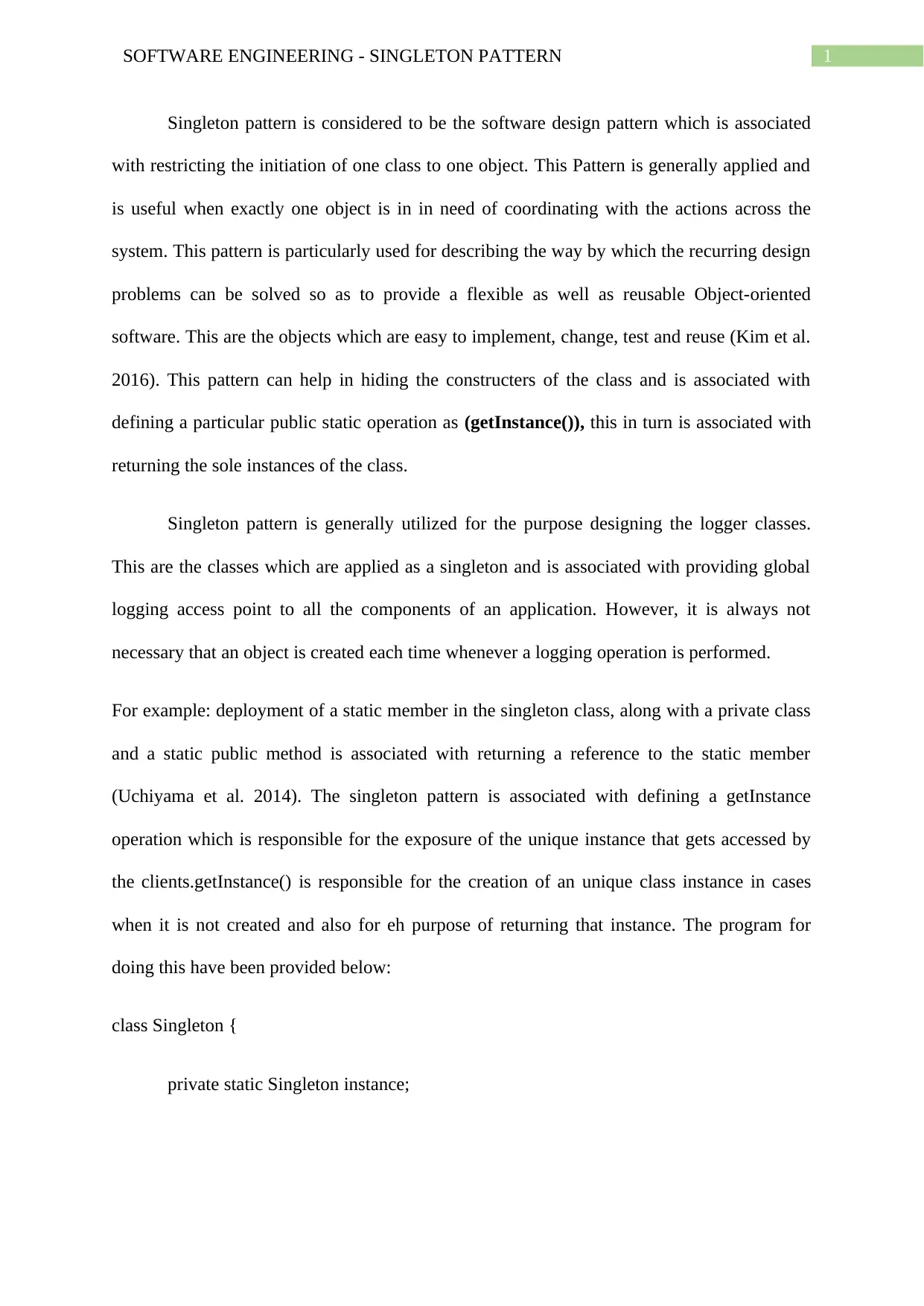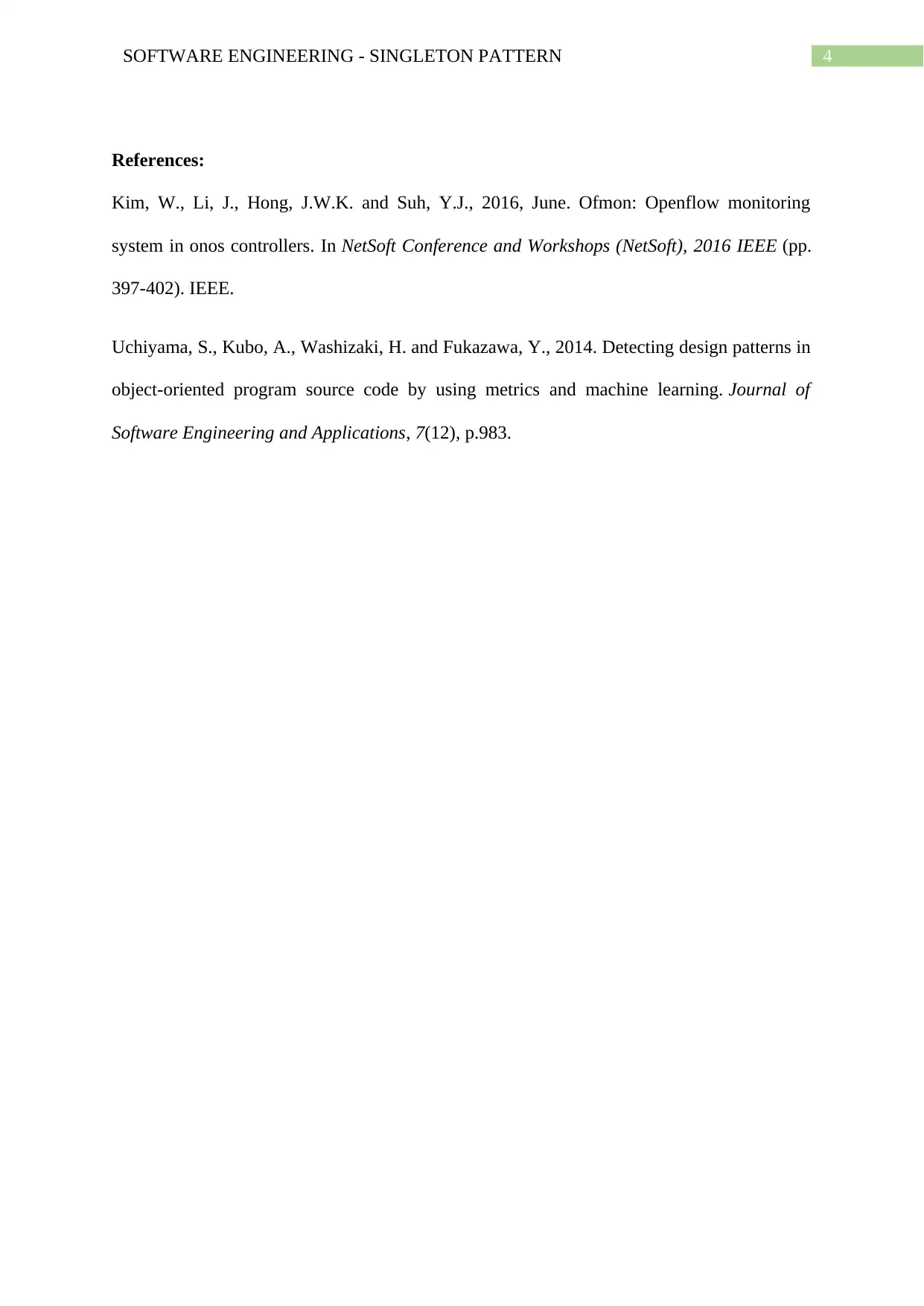Singleton Pattern in Software Engineering: A Detailed Report
VerifiedAdded on 2023/05/31
|5
|538
|412
Report
AI Summary
This report delves into the Singleton pattern, a crucial design pattern in software engineering. It explains the pattern's core concept: restricting a class to a single instance, and its application in scenarios requiring global access and coordination, such as logging systems. The report highlights the benefits of the Singleton pattern, including ease of implementation, testing, and reusability, while also explaining its role in managing class constructors. The report further provides a code example demonstrating the implementation of the Singleton pattern, particularly focusing on the getInstance method's role in ensuring only one instance is created. References to supporting literature are also included.
1 out of 5








![[Course Name] Report: System Design Analysis with UML Pattern Language](/_next/image/?url=https%3A%2F%2Fdesklib.com%2Fmedia%2Fimages%2Fqv%2F5b5e98c470704e78adb34be6f995f156.jpg&w=256&q=75)

![[object Object]](/_next/static/media/star-bottom.7253800d.svg)